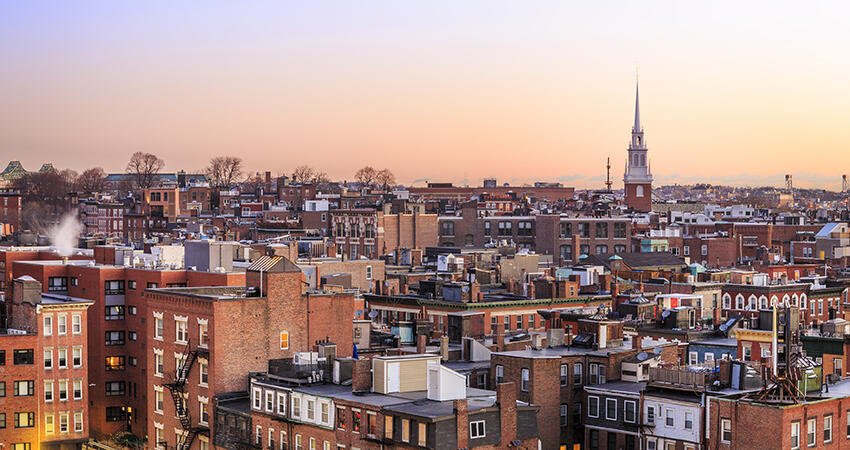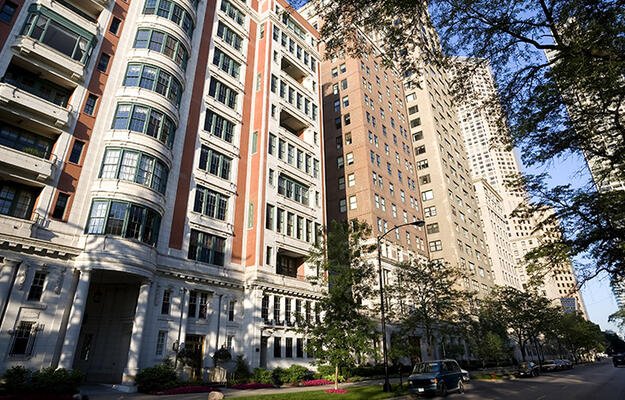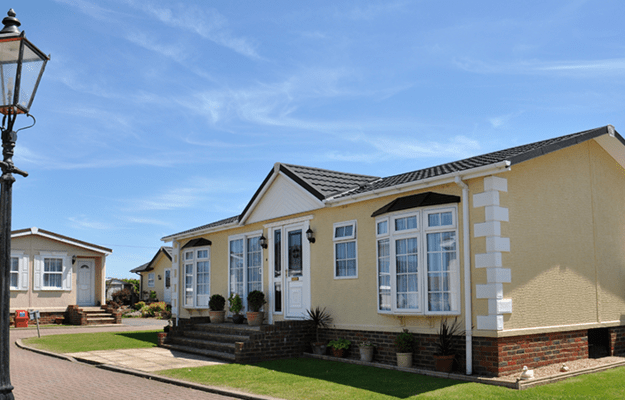
Marcio Jose Bastos Silva / Shutterstock
How Cities Are Paving the Way to Fair Housing: An Expert Discussion
On day one, the Biden administration announced its commitment to advancing racial equity through an unprecedented executive order. The executive order reaffirms federal commitment to the Affirmatively Furthering Fair Housing (AFFH) mandate, reverses the previous administration’s regulatory actions that undermine fair housing policies and laws, and directs the US Department of Housing and Urban Development (HUD) to take steps to “redress racially discriminatory federal housing policies that have contributed to wealth inequality for generations.” However, exercising the executive order will take time. To address the pressing need to protect and further fair housing, local governments and advocates can look to innovative examples from three cities that have advanced fair housing through equity-centered, evidence-based policies.
Novel initiatives in Chicago, Louisville, and Boston can lead local progress on fair housing and may provide models for other cities looking to repair the harms of decades of racist zoning regulations and discriminatory housing policies. These initiatives also offer concrete actions the federal government could take to better support local fair housing action.
To explore how to apply and scale up these innovations, we spoke with Sendy Soto, managing deputy commissioner for the City of Chicago Department of Housing; Emily Liu, director of Louisville Metro Planning and Design Services; and Sonal Gandhi, deputy chief of staff for the Boston Planning and Development Agency.
Chicago, Illinois
Chicago (PDF) launched the nation’s first racial equity impact assessment for the Low-Income Housing Tax Credit Program (LIHTC) in March 2021.
This initiative has eight stated goals:
- ensure developers and service providers who are Black, Indigenous, and people of color (BIPOC) benefit from LIHTC projects
- create housing production targets for specific subpopulations based on need
- improve access to housing units for marginalized groups
- coordinate housing with other neighborhood amenities
- improve engagement, management standards, and enforcement in properties
- improve resident outcomes and support homeownership and wealth-building opportunities
- create more accessible, family-friendly homes and make applications more user-friendly
- ensure LIHTC developments address residents’ mental health needs
From your experience with this initiative, what advice or lessons would you share with other cities looking to take fair housing action?
Sendy Soto: Other cities should see a racial equity impact assessment as an opportunity to normalize the conversation of undoing systemic racism at housing agencies, both among the leadership team and through designing better policy. The work of racial justice can feel isolating for the individual leader whose job is to oversee this work, but a racial equity impact assessment helps build an inclusive community from within the institution. A racial equity impact assessment process also results in better policy suggestions that support our fair housing goals. For example, we may not have created an expectation for partnering with BIPOC developers and wealth-building opportunities for residents without this process.
How do you think your leadership at the local level can inform federal action? What would you like to see from the new administration to better support your efforts to further fair housing?
SS: The Biden administration is well positioned to lead authentic racial justice initiatives and already demonstrated its commitment through the Executive Order on Advancing Racial Equity and Support for Underserved Communities. Leading this work for the Chicago’s Department of Housing, in the third-largest city in the United States, has illustrated to me that we can make bold and radical shifts in the way government conducts services to better serve populations who have been historically marginalized and harmed through racist and discriminatory practices. I would like to see HUD and the White House launch a national racial equity impact assessment on the Low-income Housing Tax Credit program, it would be a game changer.
Louisville, Kentucky
In 2020, Louisville Metro Planning and Design Services developed a detailed website charting the racist origins of its zoning code and launched an equity review of its zoning regulations, called the Land Development Code. The review, which incorporates community feedback, identifies barriers to equity in the existing code. Staff have pledged to center racial equity (PDF) throughout the process. Metro government staff used virtual community engagement sessions focused on housing and environmental justice to inform the updated Land Development Code. Louisville Metro’s proposed zoning amendments are targeted at improving housing options, affordability, and mitigating environmental justice concerns. Though many cities across the US have initiatives to reform zoning code, the approach taken by Louisville Metro differs from others because of its comprehensiveness. Five components are key to their thorough review of rulemaking: confronting the racist policies of the past, identifying ways they still fuel inequitable outcomes, creating new decisionmaking tables, allowing robust community engagement, and producing strong accountability measures.
From your experience with this initiative, what advice or lessons learned would you share with other cities looking to take fair housing action?
Emily Liu: A core component of Louisville’s work that other cities would benefit from is investing in research on a community’s specific history of racism in housing and land use before taking further steps to develop policy or plans. In order to address issues like racial disparities in wealth and health through land-use reforms, it was important that we have a firm understanding of the past actions that produced our present conditions. Then, it is essential that cities not only acknowledge this history but take actions that are informed by this research to prove to the community that you are serious about dismantling systemic racism and barriers to fair housing via zoning.
We also really emphasized meaningful public engagement with specific attention to the communities who may be most impacted by reforms relating to affordable housing access or environmental justice. While the pandemic forced our community engagement sessions to go virtual (and we held over 100 meetings!), our shift to flexible, virtual engagement likely increased participation. For example, recognizing that not everyone has access to technology or time to visit the sessions, we set up a dedicated hotline that people could call with feedback or questions at any time. Even when in-person meetings can resume, we will keep finding ways to incorporate different kinds of technology to increase accessibility.
How do you think your leadership at the local level can inform federal action? What would you like to see from the new administration to better support your efforts to further fair housing?
EL: Since zoning is a local function, the Biden administration should work with cities to remove barriers to pursuing, and actively support projects that uplift, fair housing. First, it would be really impactful if the Biden administration and HUD created more funding opportunities for cities actively confronting fair housing issues and legacies of racist planning. And second, while funding is important for expanding capacity, I would also like to see more technical assistance and policy guidance on a federal level for cities. We didn’t have a ton of models to look to, and federal guidance and resources on zoning reform and public engagement processes would have been helpful. By learning from cities like Louisville, I hope the federal government can create systems of technical and financial support that are helpful for other cities.
Boston, Massachusetts
In December 2020, Boston became the first major US city to file a fair housing amendment to its zoning code. The amendment requires proposed developments to evaluate impacts on area residents who are historically discriminated against so steps can be taken to reduce those effects, provide new housing opportunities, and address histories of exclusion. Evaluations are guided by a displacement analysis and historical exclusion data that will be provided by the Boston Planning and Development Agency (BPDA). Potential steps required of new developments with disproportionate impact on historically discriminated communities include the following:
- offer an additional percentage of Inclusionary Development Policy (IDP) units—meaning more affordable units in new developments—than otherwise required
- deepen the affordability of IDP units to increase their availability to low- and extremely low–income households, and provide additional units accessible to people with physical disabilities
- provide a higher proportion of family-sized (two-or-more bedroom) IDP units, or any other option that meets the AFFH goals
Projects will also be required to market IDP units in accordance with an Affirmative Fair Housing Marketing Plan to further access to housing, with the goal of ensuring community-wide knowledge about their availability.
From your experience with this initiative, what advice or lessons learned would you share with other cities looking to take fair housing action?
Sonal Gandhi: This year, the BPDA worked collaboratively with multiple city agencies, elected officials, advocates, and developers to amend Boston’s zoning code to include requirements that will guide necessary, inclusive growth to ensure equitable, meaningful access to housing. The BPDA created a new publicly available assessment form and Housing and Household Composition Community Profile tool to provide a methodology to assess the fair housing component of proposals through the lens of historical exclusion and demographic data. These tools are integral to helping guide the conversations and implementing specific strategies and intervention options to meet AFFH goals in a clear, consistent, predictable, and fair manner.
How do you think your leadership at the local level can inform federal action? What would you like to see from the new Administration to better support your efforts to further fair housing?
SG: As HUD works to reinstate and strengthen the AFFH regulations, it should support communities in assessing and reforming their zoning codes and share best practices from places like Boston that have already invested in this work. This zoning amendment will not only affirmatively further fair housing through Boston’s zoning code, but it will also promote inclusive communities by promoting full and equal access for persons with disabilities and ensuring equitable, resilient and innovative utility services. This is one part of the City of Boston’s overall efforts to address discriminatory housing practices for protected classes, as defined in Massachusetts law. It codifies the work we are doing every day at the BPDA to create further access to safe and affordable housing for Boston’s residents and to advance real solutions to address some of the most challenging issues we are seeing in our communities and cities today.


